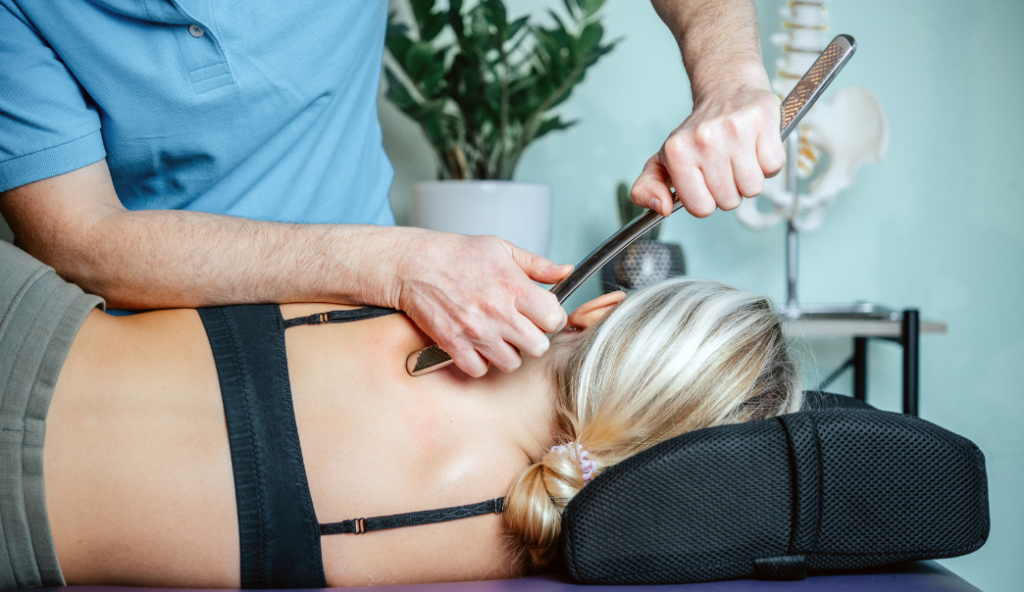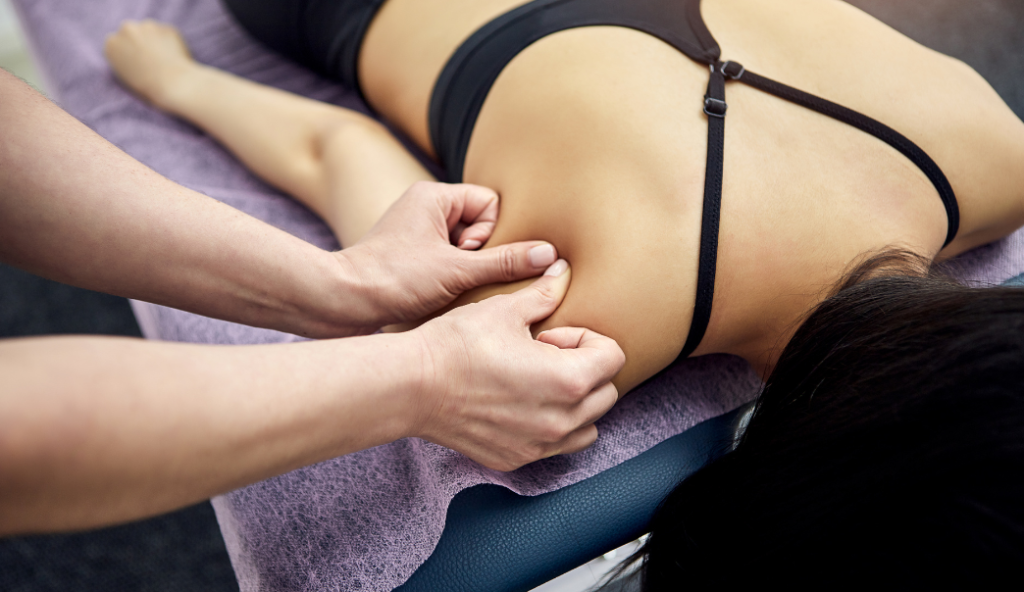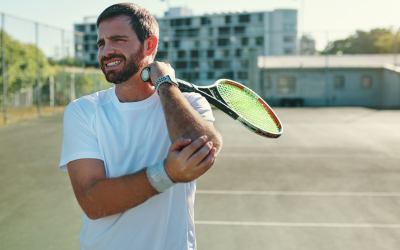Active Release Technique (ART) is a cutting-edge treatment option that has gained popularity in sports medicine and physical therapy. With its focus on soft tissue therapy and rehabilitation, ART offers a unique approach to muscle recovery and injury prevention. Whether you are an athlete looking to enhance your performance or seeking relief from chronic pain, understanding the intricacies of ART can pave the way to a healthier, more active lifestyle.
Benefits of ART for Muscle Recovery
To truly appreciate the value of Active Release Technique (ART), it is essential to recognize its numerous benefits in promoting muscle recovery. Unlike traditional massage techniques, ART targets adhesions and scar tissue that can hinder muscle function and mobility. By manually manipulating muscles and tendons, ART practitioners can break down these adhesions, allowing for an improved range of motion and increased blood flow to the area. This not only aids in the healing process but also enhances overall muscle performance.
ART Targets Adhesions and Scar Tissue Specifically
One of the critical benefits of ART is its ability to target and address adhesions and scar tissue specifically. These fibrous tissues can form due to injury, overuse, or repetitive motion, leading to pain, stiffness, and decreased flexibility. ART practitioners are trained to identify and treat these adhesions through precise movements and pressure, helping to restore normal tissue function.
During an ART session, the practitioner uses their hands to evaluate the texture, tightness, and movement of muscles, tendons, ligaments, and fascia. By applying tension and movement in specific directions, they can identify areas of restriction and dysfunction. This hands-on approach allows for a personalized treatment plan tailored to individual needs.
Active Release Technique Improves the Overall Health of Muscles
ART focuses on breaking down adhesions and aims to improve the overall health of the muscles and surrounding tissues. By increasing blood flow to the area, ART helps deliver essential nutrients and oxygen to the muscles, promoting faster healing and recovery. The increased circulation also aids in the removal of metabolic waste products, reducing inflammation and promoting a healthier muscle environment.
Another significant benefit of ART is its ability to enhance the range of motion. Adhesions and scar tissue can restrict movement, leading to decreased flexibility and increased risk of further injury. By breaking down these adhesions, ART helps restore a normal range of motion, improving performance in daily activities and athletic endeavors.
ART Helps Prevent Future Injuries
Furthermore, ART can be an effective tool in preventing future injuries. ART can help correct biomechanical issues contributing to injury by addressing imbalances and dysfunctions in the muscles and soft tissues. This proactive approach can help individuals maintain optimal muscle health, reducing the risk of future strains, sprains, and overuse injuries.
In addition to its physical benefits, ART can also have a positive impact on mental well-being. The hands-on nature of the technique can promote relaxation and stress relief, helping individuals unwind and release tension. This can contribute to overall well-being and improved quality of life.
The benefits of ART for muscle recovery are vast and encompass physical and mental improvements. By targeting adhesions and scar tissue, improving range of motion, and promoting overall muscle health, ART can be a valuable tool in enhancing muscle recovery and performance. Whether you are an athlete looking to optimize your training or seeking relief from muscle pain and dysfunction, ART offers a holistic approach to muscle recovery that can yield long-lasting results.
How ART Differs from Traditional Massage
While ART shares some similarities with traditional massage therapy, it sets itself apart with its specific focus on active movement during treatment. Unlike passive massages, where the therapist does all the work, ART involves the practitioner and the patient actively engaging in a series of movements. This dynamic approach helps to identify and treat the root cause of the problem, making it more effective and targeted than traditional massage techniques.
Regarding traditional massage therapy, the therapist primarily focuses on applying pressure and manipulating the body’s soft tissues to promote relaxation and relieve muscle tension. While this can benefit general relaxation and stress relief, it may not always address the underlying issues causing pain or discomfort. On the other hand, ART takes a more proactive approach by involving the patient in the treatment process.

The Process of Active Release Technique
At the core of ART lies a fundamental understanding of the muscular system and how it functions. During an ART session, a skilled practitioner will apply precise tension while guiding the patient through a range of motion. By doing so, the practitioner can identify tension and restricted movement areas. These areas are then treated with a combination of manual pressure and patient movement, resulting in scar tissue breakdown and, ultimately, muscle recovery.
One of the critical aspects of ART is the practitioner’s ability to assess the texture, tightness, and movement of muscles, tendons, ligaments, and fascia. This hands-on evaluation helps them identify adhesions, scar tissue, or other soft tissue abnormalities that may be causing pain or limiting mobility. ART practitioners can pinpoint the exact areas that require treatment by using their hands as a diagnostic tool.
Once the problem areas are identified, the practitioner will apply specific tension to the affected muscles or soft tissues. This tension can be in the form of direct pressure, stretching, or even active contraction of the muscle. The patient is actively involved in the process, providing feedback and actively participating in the movements prescribed by the practitioner.
By incorporating patient movement into the treatment, ART aims to break down scar tissue and adhesions, restore proper muscle length and tension, and improve overall joint mobility. The combination of manual pressure and patient movement helps release trapped nerves, improve blood flow, and promote healing.
ART for Sports Injuries and Performance
Athletes, both amateur and professional, have increasingly turned to ART to aid their injury recovery and optimize their performance. Whether it be a strained muscle, tendonitis, or even a chronic condition like a runner’s knee, ART can provide targeted treatment to alleviate pain and restore optimal muscle function. By addressing the injury’s root cause, ART facilitates faster healing and helps prevent future recurrences, allowing athletes to perform at their best.
For athletes, the ability to move freely and without pain is crucial for optimal performance. ART’s focus on active movement and targeted treatment makes it an ideal therapy for sports-related injuries. By identifying and addressing the specific areas of tension or scar tissue, ART can help athletes regain their full range of motion, improve muscle strength and flexibility, and reduce the risk of future injuries.
Furthermore, ART can also be used as a preventive measure to enhance athletic performance. Regular ART sessions can help identify and address any potential imbalances or restrictions in the muscles and soft tissues, allowing athletes to optimize their movement patterns and reduce the risk of overuse injuries. By maintaining optimal muscle function and mobility, athletes can perform at their peak and achieve their goals.
Common Conditions Treated with ART
Active Release Technique (ART) is a highly effective treatment method beyond addressing sports-related injuries. While it is widely known for its success in treating athletes, ART can also relieve various chronic conditions. Let’s explore some of these conditions in more detail:
Carpal Tunnel Syndrome
Carpal tunnel syndrome is a common condition that affects the hand and wrist. It occurs when the median nerve, which runs from the forearm to the hand, becomes compressed or irritated. This compression can lead to pain, numbness, and weakness in the affected hand. ART’s targeted approach can help release tension in the muscles and soft tissues surrounding the carpal tunnel, reducing pressure on the median nerve and relieving symptoms.
Plantar Fasciitis
Plantar fasciitis is characterized by inflammation of the plantar fascia, a thick band of tissue connecting the heel bone to the toes. It often causes intense heel pain, especially with the first steps in the morning. ART can be highly beneficial in treating plantar fasciitis by addressing the underlying muscle imbalances and tightness contributing to the condition. By releasing tension in the affected muscles, ART can help alleviate pain and improve mobility.
Postural Imbalances
Poor posture can lead to musculoskeletal issues, including back pain, neck pain, and headaches. ART can be crucial in correcting postural imbalances by targeting the muscles responsible for maintaining proper alignment. By releasing tension and adhesions in these muscles, ART can help restore balance and improve posture, reducing pain and discomfort.
Rotator Cuff Injuries
The rotator cuff is a group of muscles and tendons surrounding the shoulder joint, providing stability and facilitating movement. Injuries to the rotator cuff are common and can result from repetitive overhead motions or traumatic events. ART can be an effective treatment option for rotator cuff injuries, as it focuses on releasing tension and scar tissue in the affected muscles and tendons. This can help restore proper shoulder function and range of motion, allowing pain-free movement.
Headaches Caused by Muscle Tension
Headaches can be debilitating and have a significant impact on daily life. Muscle tension is a common cause of headaches, often resulting from stress, poor posture, or neck and shoulder muscle tightness. ART can help alleviate headaches caused by muscle tension by targeting the specific muscles involved and releasing adhesions or tightness. By addressing the root cause of the headaches, ART can provide long-lasting relief and improve overall well-being.
Whether you’re dealing with acute pain or a chronic condition, ART offers a potential solution to alleviate discomfort and enhance your quality of life. Its targeted approach and focus on releasing tension and adhesions in the muscles and soft tissues make it a valuable treatment option for many conditions.
Consult a qualified ART practitioner to determine if this technique is proper. Here is a link to our personal favorite; we might be biased.

Finding a Qualified ART Practitioner
When considering ART as part of your wellness plan, finding a qualified practitioner with the necessary expertise and training is crucial. Look for professionals who have received official certification in ART, ensuring they have undergone rigorous training and adhere to the highest standards of practice. Seeking recommendations from trusted sources and reading reviews can also help narrow down your choices and ensure you receive optimal care.
What to Expect in an ART Session
One of the advantages of ART is its patient-centered approach, which involves active participation during the treatment process. During an ART session, you can expect your practitioner to thoroughly assess your condition, asking questions about your symptoms and medical history. The treatment may involve hands-on therapy, patient movements, and stretching exercises. While some discomfort during treatment is normal, your practitioner should prioritize your comfort and well-being.
Integrating Active Release Technique into Your Wellness Plan
ART is not just limited to injury recovery; it can also play a vital role in maintaining your overall well-being. Whether you are an athlete looking to prevent injuries or improve flexibility and mobility, integrating ART into your wellness plan can yield significant benefits. By incorporating regular ART sessions alongside other self-care practices like stretching and strength training, you can maximize the positive impact on your body and enjoy long-term musculoskeletal health.
Exploring Advanced ART Techniques
Innovation is an ongoing process, and ART is no exception. As the field continues evolving, practitioners explore advanced techniques that optimize treatment outcomes. These advancements include specialized protocols for specific conditions, integration of technology-assisted therapies, and even combination therapies that merge ART with other modalities.
By staying abreast of advancements in ART, practitioners can continue to elevate the scope and effectiveness of treatment, offering patients a broader range of options for recovery and improved musculoskeletal health.
Understanding the Active Release Technique (ART) is crucial for anyone seeking an effective and targeted muscle recovery and injury prevention approach. With its unique combination of soft tissue therapy and patient movement, ART stands apart from traditional massage techniques, offering numerous benefits and addressing many conditions.
Whether you are an athlete looking to enhance your performance or seeking relief from chronic pain, ART can transform your journey to optimal health and functionality. By finding a qualified practitioner, integrating ART into your wellness plan, and staying informed about advancements in the field, you can unlock the full potential of this powerful treatment modality.


